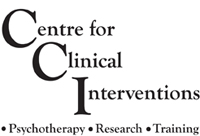Progressive muscle relaxation
One of the body’s reactions to fear and anxiety is muscle tension.
This can result in feeling tense, or can lead to muscle aches and pains, as well as leaving some people feeling exhausted.
Think about how you respond to anxiety. Do you tense up when you’re feeling anxious?
Muscle relaxation can be particularly helpful in cases where anxiety is especially associated to muscle tension.
This information will guide you through a common form of relaxation designed to reduce muscle tension.
Muscle tension
Muscle tension is commonly associated with stress, anxiety and fear as part of a process that helps our bodies prepare for potentially dangerous situations.
Even though some of those situations may not actually be dangerous, our bodies respond in the same way.
Sometimes we don’t even notice how our muscles become tense, but perhaps you clench your teeth slightly so your jaw feels tight, or maybe your shoulders become tense, resulting in a feeling of tightness in your neck and shoulders.
Muscle tension can also be associated with backaches and tension headaches.
Progressive muscle relaxation
One method of reducing muscle tension that people have found helpful is through a technique called progressive muscle relaxation (PMR).
In PMR exercises, you tense up particular muscles and then relax them, and then you practise this technique consistently.
Preparing for relaxation
When you are beginning to practice PMR exercises keep in mind the following:
Physical injuries
If you have any injuries, or a history of physical problems that may cause muscle pain, always consult your doctor before you start.
Select your surroundings
Minimise the distraction to your 5 senses – such as turning off the TV and radio, and using soft lighting.
Make yourself comfortable
Use a chair that comfortably seats your body, including your head. Wear loose clothing, and take off your shoes.
Internal mechanics
Avoid practicing after big, heavy meals, and do not practise after consuming any intoxicants, such as alcohol.
General procedure
- Once you’ve set aside the time and place for relaxation, slow down your breathing and give yourself permission to relax.
- When you are ready to begin, tense the muscle group described. Make sure you can feel the tension, but not so much that you feel a great deal of pain. Keep the muscle tense for approximately 5 seconds.
- Relax the muscles and keep relaxed for approximately 10 seconds. It may be helpful to say something like ‘relax’ as you relax the muscle.
- When you have finished the relaxation procedure, remain seated for a few moments allowing yourself to become alert.
Relaxation sequence
- Right hand and forearm – make a fist with your right hand.
- Right upper arm – your right forearm up to your shoulder to ‘make a muscle’.
- Left hand and forearm – make a fist with your left hand.
- Left upper arm – your left forearm up to your shoulder to ‘make a muscle’.
- Forehead – raise your eyebrows as high as they will go, as though you were surprised by something.
- Eyes and cheeks – squeeze your eyes tight shut.
- Mouth and jaw – open your mouth as wide as you can, as you might when you‘re yawning.
- Neck – be careful as you tense these muscles, face forward and then pull your head back slowly, as though you are looking up to the ceiling.
- Shoulders – tense the muscles in your shoulders as you bring your shoulders up towards your ears.
- Shoulder blades/back – push your shoulder blades back, trying to almost touch them together, so that your chest is pushed forward.
- Chest and stomach – breathe in deeply, filling up your lungs and chest with air.
- Hips and buttocks – squeeze your buttock muscles.
- Right upper leg – tighten your right thigh.
- Right lower leg – do this slowly and carefully to avoid cramps. Pull your toes towards you to stretch the calf muscle.
- Right foot – curl your toes downwards.
- Left upper leg – repeat as for right upper leg.
- Left lower leg – repeat as for right lower leg.
- Left foot – repeat as for right foot.
Practise means progress
Only through practise can you become more aware of your muscles, how they respond with tension, and how you can relax them.
Training your body to respond differently to stress is like any training – practising consistently is the key.
Where to get help
Centre for Clinical Interventions (CCI)
See your doctor
Mental Health Emergency Response Line (MHERL)
- Metro callers: 1300 55 788
- Peel: 1800 676 822
RuralLink
- Rural and remote areas 1800 552 002
Remember
- Muscle tension is one of the body’s responses to fear, anxiety and stress.
- Progressive muscle relaxation (PMR) technique helps to remove tension and relax muscles.
This information provided by

Acknowledgements
Centre for Clinical Interventions
This publication is provided for education and information purposes only. It is not a substitute for professional medical care. Information about a therapy, service, product or treatment does not imply endorsement and is not intended to replace advice from your healthcare professional. Readers should note that over time currency and completeness of the information may change. All users should seek advice from a qualified healthcare professional for a diagnosis and answers to their medical questions.